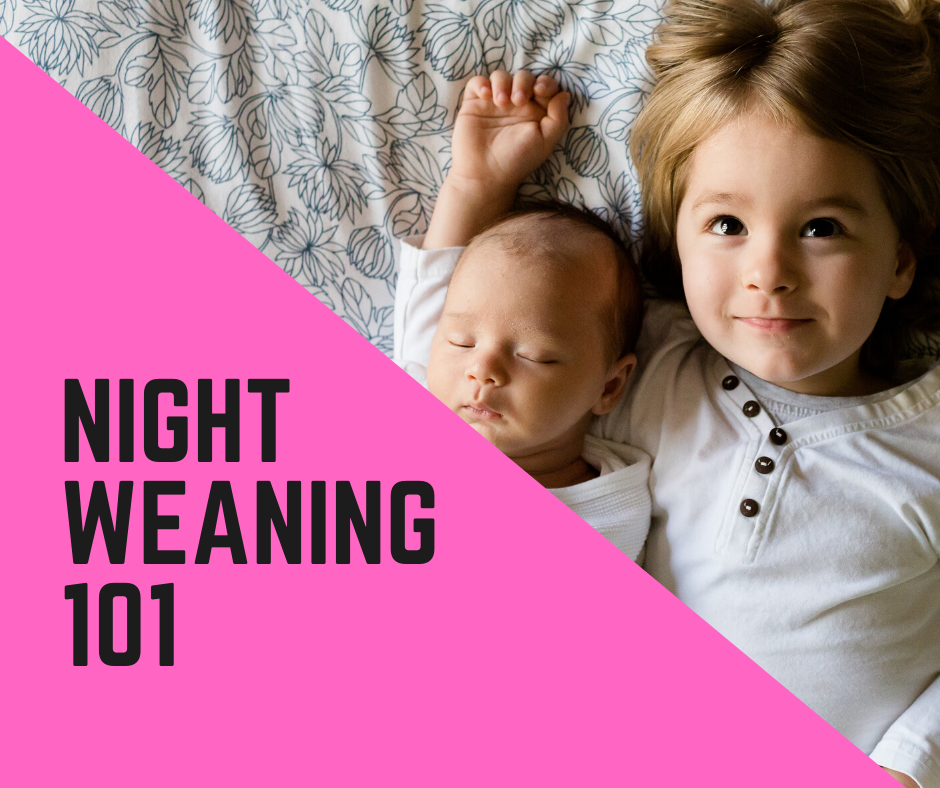There are so many uncertainties when it comes to our little ones. But one thing is certain – there will come a time when they will no longer need night feeds.
How do you know if your baby is ready to night wean?
This is a tricky question and will vary between children. Some babies are ready to drop all night feeds at 3-4 months while others still need them closer to 1 year old. It’s important to use your own intuition and judgement here and try not to compare your child’s progress with others – it will drive you nuts!!!
As a general rule if your little one is a good weight and feeding well in the day (taking on enough calories) and you have no weight concerns they may not need a night feed anymore.
It’s also worth remembering that not every night-waking is due to hunger so don’t fall into the trap of offering a feed every time they wake.
The first step is to determine when/if your baby is genuinely hungry and when your baby is just waking and needing some assistance to get back to sleep. A good guide is to assess how frequently your little one feeds in the day. If they are going 3-4 hours in the day there is no reason why they can’t be doing that length (ideally longer) at night. If they are waking every few hours at night for example – I would be suspicious that every one of those wake ups are hunger related. So use your judgement.
The way forward is based on whether you are confident they no longer need any feeds at all or if there may be some hunger still to address.
Cold Turkey Approach- when there is no hunger
This gives a simple and clear message to your little one that milk is no longer available after the last bedtime feed until morning. If you choose this approach, then be consistent and stick with it even if it feels tough to start. Remember your little one is used to you offering milk to get them back to sleep, so falling asleep without milk and you offering comfort instead will be an adjustment phase for you both. But stick with it – this approach offers a quick solution.
Milk Reduction Method – for suspected hunger
If you are breastfeeding, gradually reduce the amount of time your baby is on each breast. You can cut back by five minutes each night until you get down to just five minutes. At this point you can stop altogether. Make sure your little one continues to feed heartily. If they start to doze and comfort suck – unlatch them even if its under the allotted time.
If you are formula feeding you can decrease the amount in the bottle by a few ounces every few nights and when you get to two ounces, it’s time to stop. You can also dilute formula with water making it gradually weaker each night until your little one is not bothered about waking up for it. However I find that for some babies its all about the suckling and not what’s in the bottle so reducing the total amount works better.
Dream and response feeds
Its also worth mentioning the difference between response feeds and dream feeds as they both can be used as part of your night weaning plan.
Dream Feeds
This approach to feeding works really well because you offer your baby a feed sometime between 10-11pm when they are asleep (don’t worry if they wake up), rather than responding to a cry. It means you can feel reassured that your baby has had enough calories and will not be hungry for the rest of the night, which encourages you to be consistent with your soothing response to your baby’s cries at other night-wakings. After 3-5 nights, stop doing the dream feed.
Response Feeds
Map out when you will allow a response feed in advance based on when you anticipate hunger to creep in. As soon as your little one wakes after this allotted time say 2am for example, offer your baby the feed straight away without trying to resettle first. Ensure baby is not asleep when placed back down. Any other wakings outside of your allotted feed times to be met with your soothing response rather than a feed. After 3-5 nights, stop feeding all together and respond consistently with your soothing.
There is no right or wrong way to approach dropping night feeds. So choose a method that feels right for your family and for your baby and their individual needs. Most importantly when you start night weaning keep progressing things forward. Do this by setting yourself next steps/targets over a set timeframe for example every few nights until you reach your end goal.
Struggling with knowing how best to settle your little one without a feed?
Book in for a free 15 minute chat to see how I can help here







